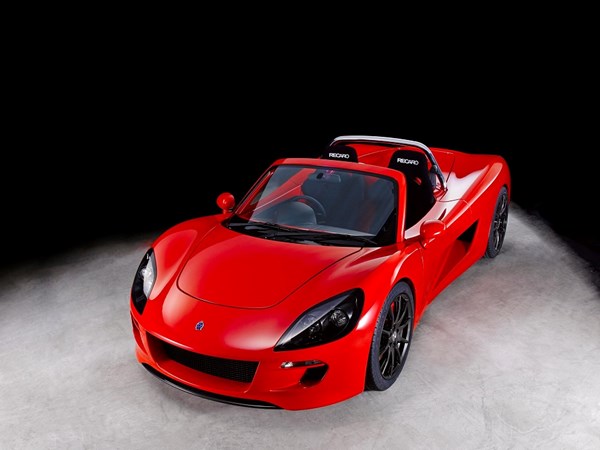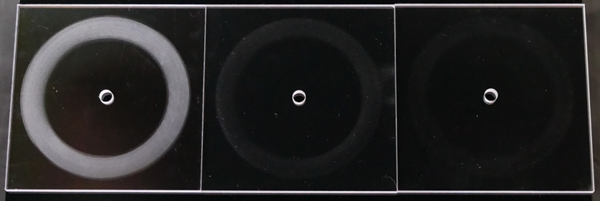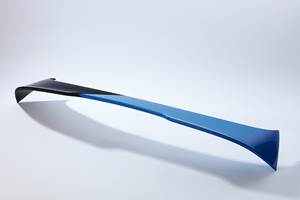The “Holy Grail” of PC Glazing Appears on the Sporty Electric Tommykaira ZZ
Teijin has developed the world’s first “pillar-less” PC windshield for a commercial car.

There’s been a lot of activity taking place in the automotive PC glazing arena within the last few years, starting with non-windshield glazing such as fixed rear-side windows and rear windows, with developments led by companies such as SABIC and Covestro.
Most recently, this has included a new-generation Buick GL8 and GL8 Avenir luxury multi-purpose vehicles, which sport what is reportedly the largest PC rear-quarter window in the world. It is molded from SABIC’s Lexan PC. Yet another, was a new electric concept car featured by Covestro at K2016, which features a wrap-around glazing made of transparent Makrolon PC.
Just this week, we found out that what appears the “holy grail” of PC glazing—the world’s first full-width (“pillar-less”) PC windshield—has made a splash in a commercial vehicle. The news came from Japan’s Teijin Ltd., that the windshield, made from the company’s Panlite PC and produced by GLM Co., Ltd—an EV (electric vehicle) manufacturer launched by Kyoto University, appears on the sporty electric vehicle Tommykaira ZZ.
PC resins are prohibited from use in the windshields due to automotive safety standards. Teijin’s PC-resin window, thanks to its high resistance to abrasion and weather, meets new Japanese standards that will become effective in July, paving the way for its use in the Tommykaira ZZ. Meanwhile, GLM expects to acquire street-ready certification for the Tommykaira ZZ fitted with Teijin’s PC windshield, and then will offer the window as an option by this autumn.
Teijin also plans to market its PP resin window concept for automakers in the U.S. and the EU, where demands for properties equivalent to new standards for safety and security are increasing. By thickening the perimeter of its PC window, Teijin says it managed to eliminate the need for the A-pillar, or vertical support that divides the windshield and front window. As a result, the transparent PC resin achieves unobstructed sight lines for safer driving and more enjoyable viewing. The integrated PC-resin pillar-less window is also 36% lighter in weight than a conventional front window with an A-pillar.
Teijin provides PC solutions for plastic glazing, including for train windows, automotive panoramic roofs and quarter windows, leveraging PC’s competitive advantages over glass—including 200 times greater resistance to impact and just half the weight.
This past March, the company developed a new plasma-enhanced chemical vapor deposition (plasma CVD) hard-coating technology for the wet hard-coat layer, which is said to offer the same level of abrasion resistance and weather resistance as glass windows. The company collaborated with Tsukishima Kakai Co. to develop a plasma CVD pilot plant to treat large PC windows with uniform coatings of plasma CVD. Large surfaces, including the size of actual vehicle’s resin windows and those with complex curves are now being glazed at the pilot plant.
The company says it’s leveraging its lightweight, strong, high-performance materials and integrated composite technologies as one of the key focuses of the transformation strategies for the group’s medium-term management plan, under which the company aims to become a multi-material components supplier that works closely with automakers to develop various applications for lightweight automotive bodies.
Meanwhile, SABIC sources weighed in on PC glazing activities with the following points:
● Various automakers have executed a “pillar-less” style windscreen design in concept vehicles through the years.
● Design trends support the use of PC glazing in windscreens (and in other window applications). There is interest from automakers in PC glazing to create complex curvatures on the edges of windscreens and take advantage of part-integration opportunities.
● SABIC has expertise and experience working with the industry on “pillar-less” style design approaches.
● SABIC automotive glazing experts played a support tole in the informal group that provided guidance on the proposed regulatory rule in Europe to allow for PC glazing in windscreens. This legislation was introduced under ECE R43 in 2015 and is now used as a reference for other countries.

Related Content
K 2022 Preview: Engineering Materials for Sustainability and E-Mobility
Materials that are sustainable yet offer equal performance to their fossil-based counterparts will be prominent at K 2022.
Read MoreCelanese to ‘Shine’ at CES 2023 with Expanded Portfolio of Materials
With it acquisition of DuPont’s engineering resins, Celanese’s resin solutions for automotive electrification, e-mobility and consumer electronics are plentiful.
Read MoreHonda Now Exploring UBQ’s Biobased Material Made from Unsorted Household Waste
UBQ is aiming to expand its reach for more sustainable automotive parts as well as non-automotive applications.
Read MoreLFT-D Thrives in Automotive and Other Durables
Teijin Automotive acquires its 10th direct long-fiber thermoplastic system as demand for this technology soars.
Read MoreRead Next
Troubleshooting Screw and Barrel Wear in Extrusion
Extruder screws and barrels will wear over time. If you are seeing a reduction in specific rate and higher discharge temperatures, wear is the likely culprit.
Read MoreUnderstanding Melting in Single-Screw Extruders
You can better visualize the melting process by “flipping” the observation point so that the barrel appears to be turning clockwise around a stationary screw.
Read MoreProcessor Turns to AI to Help Keep Machines Humming
At captive processor McConkey, a new generation of artificial intelligence models, highlighted by ChatGPT, is helping it wade through the shortage of skilled labor and keep its production lines churning out good parts.
Read More

















.png;maxWidth=300;quality=90)








